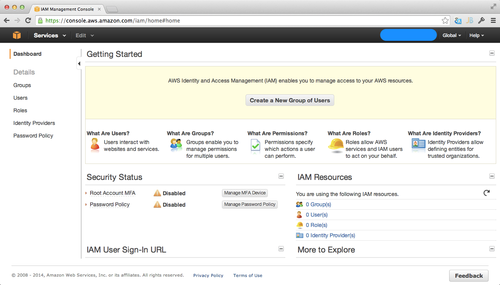

Now you can both have your VirtuelBox running and spin another box identical up on Amazon EC2. Then inside that block you can add your aws provider details, then it would look something like this: config.vm.define "aws", autostart: false do |aws_vm|Īws_vm.vm.provider :aws do |aws, override| Next you can add the dummy image so it do not tries to start your machine on aws. Now, this machine will not get started when you do vagrant up, but will get started when you do vagrant up aws. config.vm.define "aws", autostart: false do |aws_vm| Bookmark Build an Image With Packer installed, let's just dive right into it and build our first image. After this step, you should have 4 new files: package, box-disk1.vmdk, Vagrantfile, and box.ovf. This step should take a while depending on the size of your image.
Vagrant aws install#
Bookmark First Steps Install, build, and provision software onto a machine image Install Packer Packer must first be installed on the machine you want to run it on. box file: vagrant package -base my-virtual-machine.

The tricks is to create another machine, but to set it to not start up with your default machine. Create a Vagrant box with Packer post-processors. Until then, please destroy the existing machine to up with a new A future version will remove this limitation. Please use a provider that exists.> ERROR vagrant: The provider aws could not be found, but was requested to back the machine. Providers Vagrant by HashiCorp While Vagrant. Features vagrant multi machine: create multiple machine at the same time YAML config file. A provider is an infrastructure component manager like Virtualbox, VMWare, AWS, Open-stack. Vagrant Multi Machine Amazon AWS This is a Multi Machine system for vagrant with Amazon AWS provider.

VagrantĬurrently allows each machine to be brought up with only a single ERROR vagrant: Vagrant experienced an error Details: ERROR vagrant: The below example shows how to specify SSD discs (gp2) for an 8GB volume that will be deleted when the machine terminates: aws.If you are trying to use another provider with your current vagrant machine, you will likely get this error:Īn active machine was found with a different provider. If you choose the remote option, you also need to install the Amazon AWS plugin for Vagrant. You can specify the volume type in your VagrantFile using the block_device_mapping parameter in conjunction with VolumeType. Vagrant Prometheus Sensu Nagios Infrastructure as Code Automation Tools 1. VAGRANTFILEAPIVERSION '2' nfigure (VAGRANTFILEAPIVERSION) do config config.vm.box 'dummy' config.vm.provider :aws do aws, override aws.accesskeyid 'ACCESSKEYID' aws.secretaccesskey 'SECRETACCESSKEY' aws.keypairname 'KEYPAIRNAME' aws. General Purpose SSD is now the AWS default volume type (though when I was provisioning via Vagrant, it was creating Magnetic volumes if no specific parameters were set in the VagrantFile). When provisioning a machine in AWS, you are able to specify whether to use Magnetic, General Purpose SSD or Provisioned IOPS SSD volumes, depending on where you want to be on the performance/cost curve. The Vagrant AWS Provider allows you to use Vagrant to provision virtual machines in AWS.Vagrant aws how to#
Vagrant aws code#



 0 kommentar(er)
0 kommentar(er)
